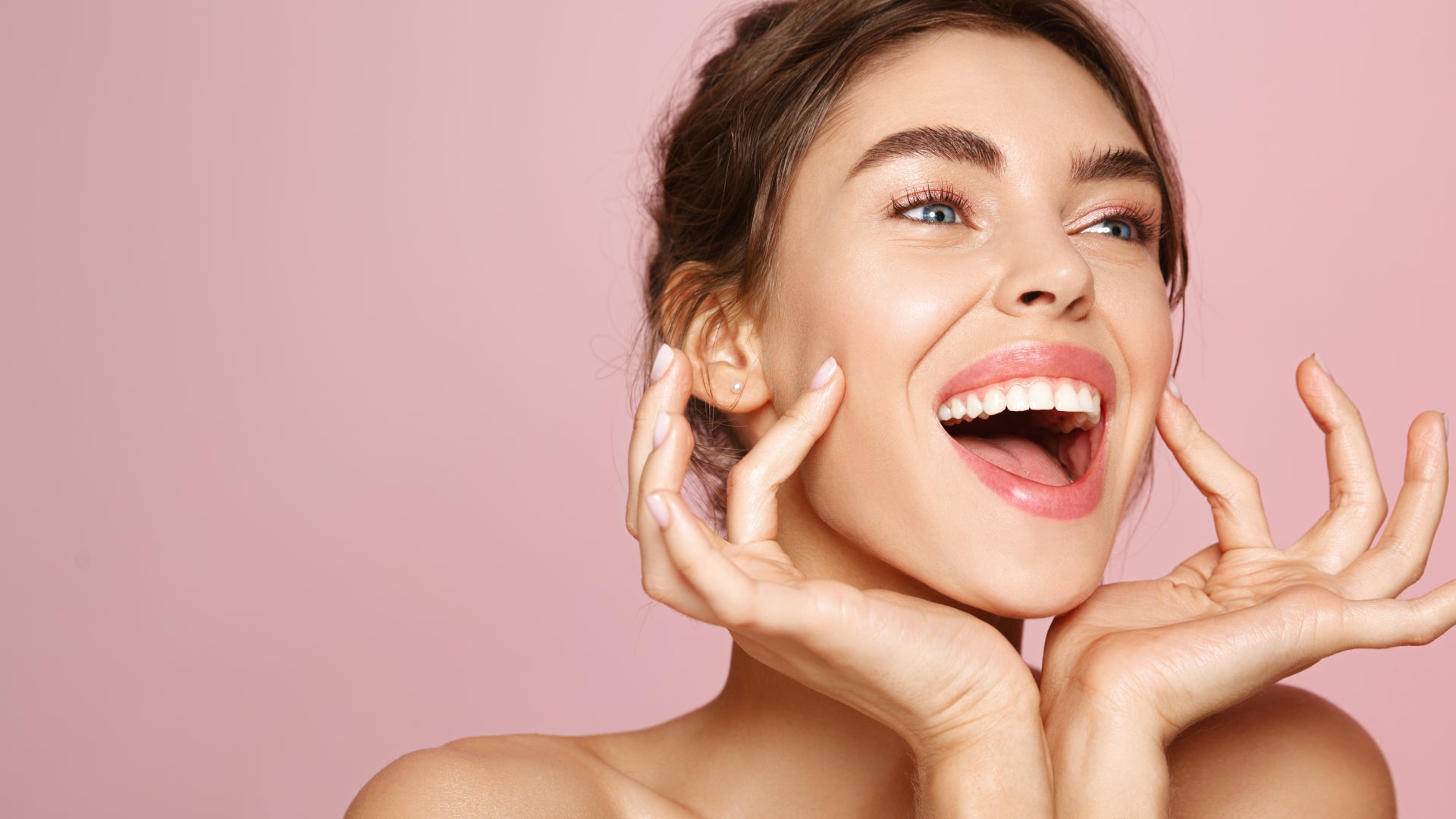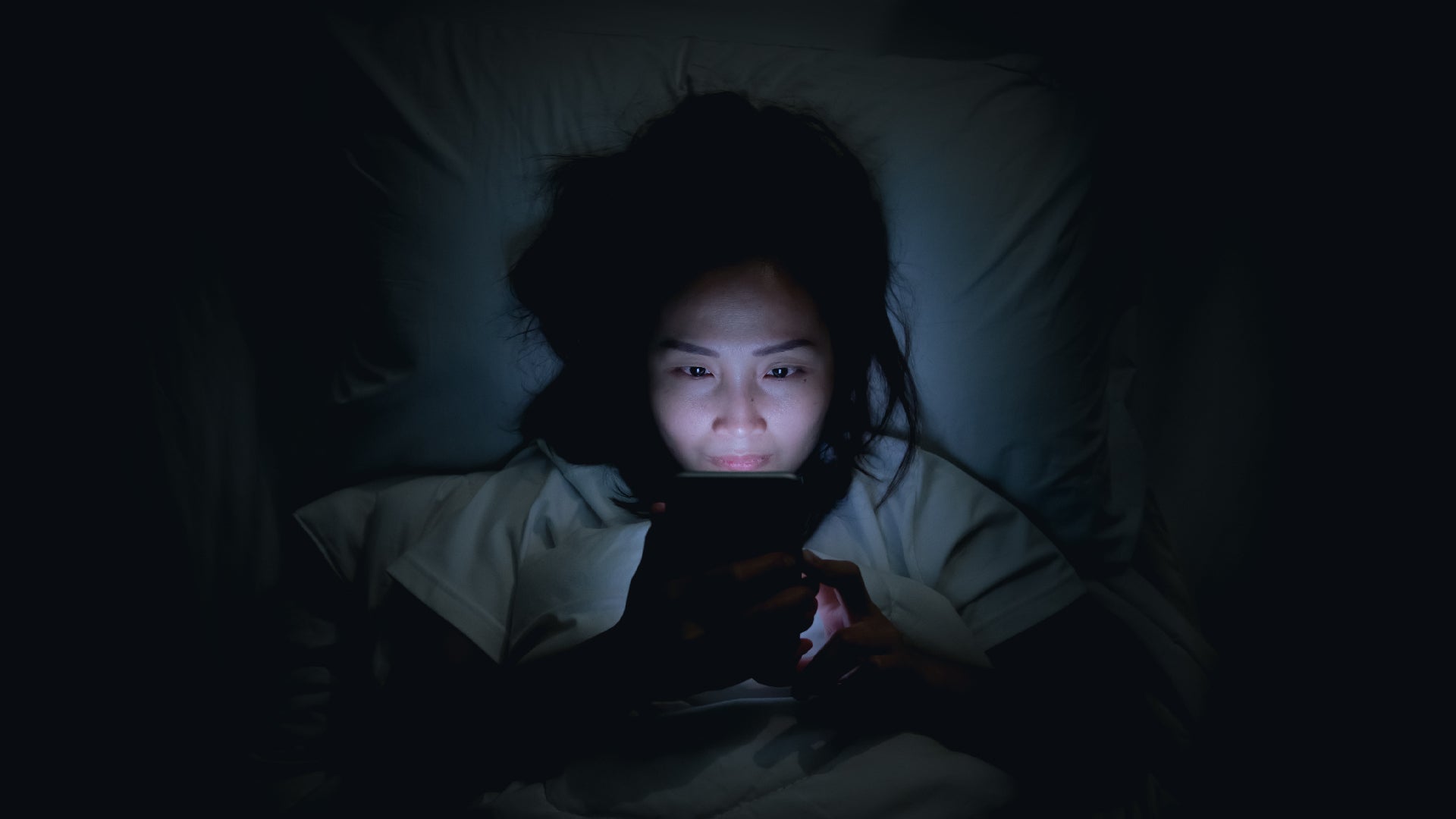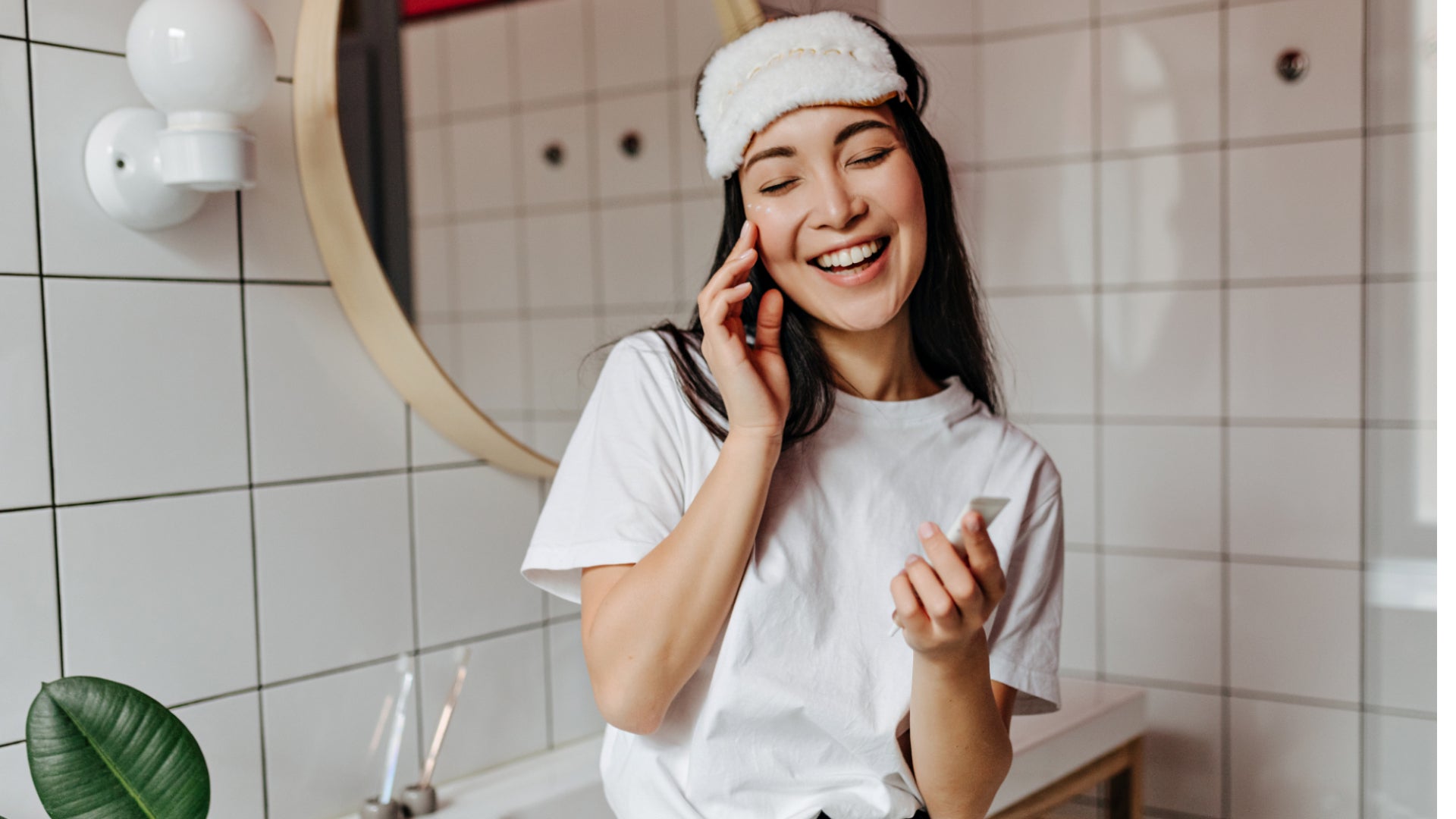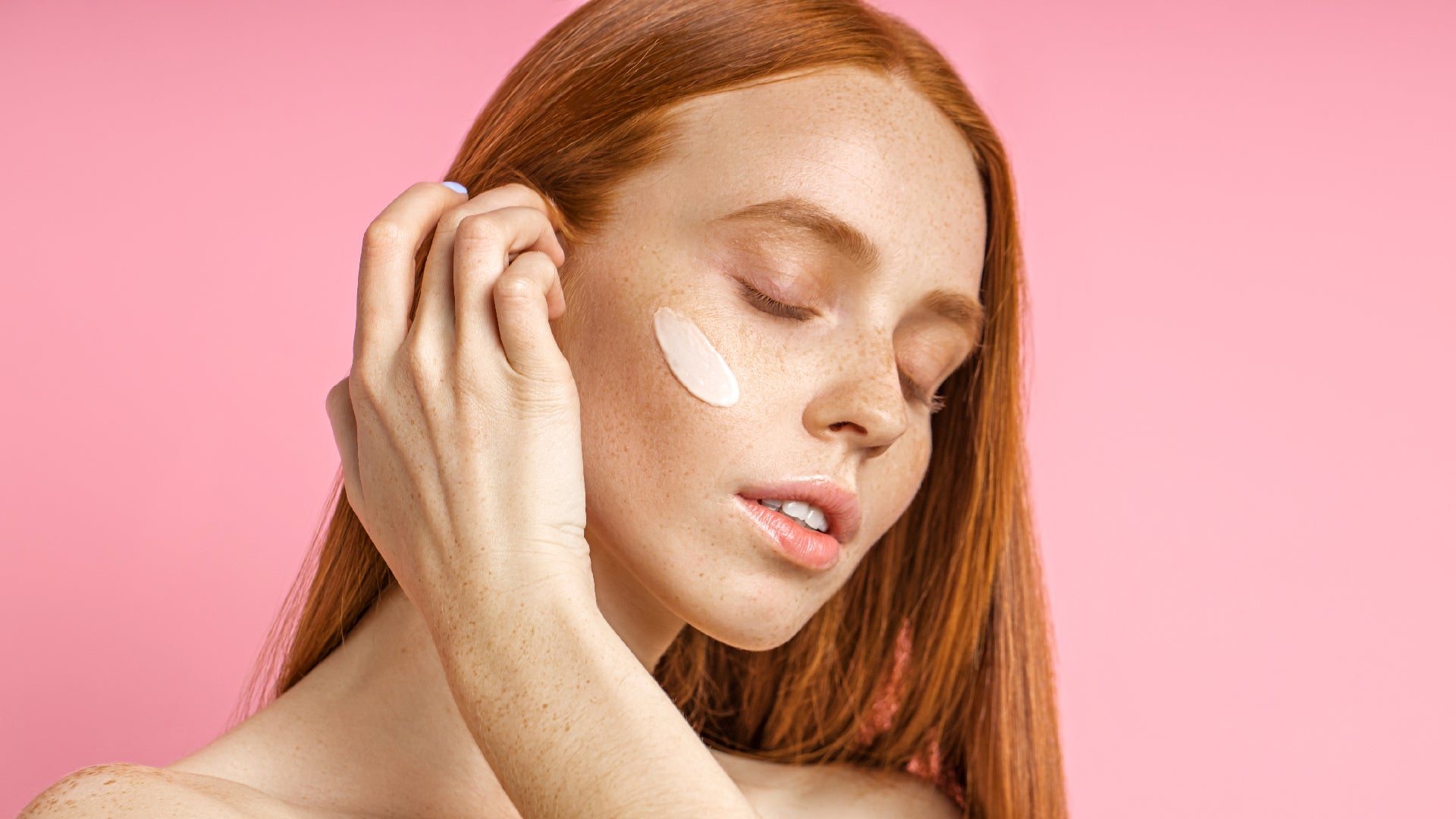
True Radical Honesty From Our Community
What To Do If You Hate Those Fine Lines Around Your Lips
Read MoreAdvice for all of your skin care needs
- all articles
- Acne
- Anti-Aging
- Collagen
- Combination Skin
- Company Announcements
- dry skin
- Exfoliation
- Eye Care
- Facial Redness
- Grooming
- Holidays
- Hyaluronic Acid
- Niacinamide
- Oily Skin
- Retinol
- Sensitive Skin
- Skincare
- Skincare Guide
- Skincare ingredients
- Skincare Routine
- Skincare Tips
- Sun Protection
- Toner
- Vegan Skincare
- Vitamin C
- view all
- Acne
- Anti-Aging
- Collagen
- Combination Skin
- Company Announcements
- dry skin
- Exfoliation
- Eye Care
- Facial Redness
- Grooming
- Holidays
- Hyaluronic Acid
- Niacinamide
- Oily Skin
- Retinol
- Sensitive Skin
- Skincare
- Skincare Guide
- Skincare ingredients
- Skincare Routine
- Skincare Tips
- Sun Protection
- Toner
- Vegan Skincare
- Vitamin C
-
Retinol can make or break your skincare game. Which is why you need to seriously know your way around this active and very potent ingredient. BTW, we’re here to help with that…
Love it or loathe it, there’s no denying that when it comes to kicking serious ass in the battle against skin aging, retinol is everything. OK, OK, we hear you, vitamin C, glycolic acid and friends, it’s not everything, but it’s definitely one of the most talked-about and recommended of all anti-aging ingredients. No question.
Here’s the thing. Retinoids (the group of topical vitamin A ingredients in which retinol, along with its prescription-only cousin, tretinoin, belongs) have been studied for decades. And the results are always the same: they work. By communicating with your skin at a cellular level, retinoids have been proven to boost healing and rev up the production of collagen and elastin, which in turn accelerates cell turnover and helps strengthen your skin, increase elasticity and reduce the appearance of fine lines, wrinkles, pimples and dark spots.
If this all sounds too good to be true, you're right, it’s not all moonlight and roses. While retinoids are awesome, they require thought, patience and careful planning to make them work for your routine. And you know what? Sometimes they might not work out at all if your skin's super sensitive to such active ingredients. And that’s OK — skincare's got something for everyone.
However, we like to believe there’s a retinoid out there for almost anyone. For starters, retinol and its derivatives are way kinder to your skin than full-throttle tretinoin, so it's a good place to begin if you err on the side of sensitive skin. And second, if you’re clued-up on how and when to use a retinol serum or cream, you’re already halfway there.
Not feeling particularly clued-up just yet? Then give us five minutes to change that with our list of useful dos and don'ts...
DO Patch Test Your Retinol Treatment
Patch testing skincare is super important, especially when it comes to potent ingredients like retinol. Why? Because there’s always the possibility that your skin might react negatively, causing irritation, stinging or itching.
Skin can take up to 48 hours to react to something it doesn’t like, so apply a small amount of retinol to a discreet patch of skin (such as behind your ears or on the side of your neck), then monitor it for a couple of days before incorporating it into your routine. Mild reactions like slight redness or tingling are OK, but anything that feels super uncomfortable, burning or painful is a definite red flag and means you should not continue use. And if the feeling gets worse? Seek advice from a board-certified skincare expert, pronto.
DON’T Overdo It
One of the biggest mistakes people make when using a retinol serum or moisturizer for the first time is to apply it every day – or worse yet, twice a day. Bombarding your skin with such a powerful ingredient on the reg is simply asking for trouble (aka irritation).
Instead, take it steady. When you first start to use retinol, apply your treatment to clean, dry skin just once or twice a week so your skin has time to acclimate. Then, after a few weeks, you can – and should – slowly increase to daily use, as long as your skin can tolerate it, of course. This may take up to two or three months, but going slow will totally be worth it for the state of your skin and your sanity.
Also, with most retinol treatments, the smallest amount will go a long way, so always read and follow the instructions before use. They’ve been included for a reason.
DON’T Be Put Off By Mild Side Effects
Despite patch testing (nice job!) and introducing retinol slowly into your regimen, you could still experience some short-term side effects like mild redness, dryness and peeling. Sure, we know this is a real Debbie Downer, but don’t be put off, because slight irritation (with an emphasis on the word 'slight') is actually a good thing – so much so that the whole process has been given a name. Hear us out for a minute...
When you start using retinol, your skin goes through a kind of ‘learning’ period in which the cells adjust to turning over at a much more efficient rate. Retinization is its name and skin purging is its game. During this time, your skin may look and feel worse than it did pre-retinol. Think zits, patches of red skin and dry areas. Don’t worry, though, all this should get better in a few weeks. The rule here is not to give up too soon.
DO Regularly Moisturize
Due to the drying effects of some retinol treatments, it’s super important to keep your skin thoroughly moisturized, day and night. If you’re using a retinol serum, allow it to settle for a minute, then apply moisturizer over the top – just make sure it’s not packed with loads of other active ingredients like benzoyl peroxide or glycolic acid as this could cause major upset to your skin’s barrier function. Keep it simple, OK?
You could also incorporate a retinol moisturizer into your routine instead of the obvious retinol serum. Due to their larger molecular structure, moisturizers don’t penetrate the skin quite as much as serums, which means a retinol-based moisturizer will be much gentler on your skin in both the short and long-term.
Our Retinol Moisturizer is perfect here and contains aloe, glycerin and botanical hyaluronic acid to hydrate, as well as shea butter and jojoba oil to seal in moisture. Did you catch that, sensitive skin types?
DO Be Patient
For the best results, retinol requires consistency and dedication. This means that whatever your frequency jam is, stick with it until your skin allows you to increase usage. Stop using it and you’ll sacrifice all the time and benefits you previously put in.
Another thing: you probably won’t see visible improvements in the texture and tone of your skin for, gulp, a good three months of continued use. Sure, your pores may start to look a little more refined before that and breakouts might improve a tad, but an overnight miracle-worker, retinol is not. Time and patience are key.
DON’T Stop At Your Face
A retinol cream will reap just as awesome rewards for your neck and décolletage as it will for your face, so when you apply your treatment, don’t finish at your jawline. Smooth it down your neck and over your chest area – always applying it to clean, dry skin, of course.
And if you find your décolletage is a little too sensitive for your regular retinol cream? Reduce your frequency or try applying some basic moisturizer first. Yes, you read that correctly, by applying moisturizer before a retinol treatment, you help reduce its potency and therefore minimize irritation.
DO Apply Sunscreen Every Morning
Finally, one of the most important rules with retinol: ALWAYS apply sunscreen as the final step in your morning routine.
Skin often becomes more sun sensitive as it adapts to retinol and the surface layer of dead cells becomes thinner. But here’s the kicker, contrary to popular belief, retinol does NOT increase sun damage. It can also absolutely be applied in the morning. The reason retinol is typically used as an overnight treatment isn't because it makes skin more sensitive to UV destruction, but because sunlight deactivates retinol and makes it less effective. So now you know.
Having said that, you must apply a high factor, broad spectrum sunscreen containing FDA-approved sun protective ingredients like zinc oxide or titanium dioxide every morning. Even if you only apply retinol before bed, you have to protect your skin each day from the damaging effects of the sun. No arguments.
The Rights & Wrongs Of Retinol
read more -
Listen up, y’all. It’s time to step up your protective skincare game to ensure your regimen is doing its best to protect your complexion against the woes of blue light damage.
Knowledge of UV radiation and its damaging effects on your skin are pretty well-known among all you skincare aficionados. But while UVA and UVB continue to do their worst on your lines and wrinkles, another type of light has been brought to, er, light recently.
Say hello to high energy visible light, otherwise known as blue light. But what is this mysterious blue light all about and what does exposure to it mean for the health of your skin?
Here’s what we know…
What Is Blue Light?
Known in the biz as high energy visible (HEV) light, blue light is part of the visible light spectrum (think ROY G BIV). This means that unlike ultraviolet light, which is invisible to the naked eye, you can see it.
Blue light has the shortest wavelength and highest energy of all the colors in the visible spectrum and has been proven to boost your mood, improve memory and increase mental alertness. However, it has also been linked to eye damage and, according to the Centers for Disease Control and Prevention (CDC), if you expose your body to blue light late at night, it throws off your circadian rhythms, affecting your sleeping patterns and making it difficult to fall and stay asleep.
Of course, blue light also affects your skin. More on that in a minute…
Where Does Blue Light Come From?
The majority of blue light you're exposed to comes from the sun. However, it's not the only thing at work here because smartphones, computers, TVs and other digital devices are also major sources of artificial blue light.
Now, don’t get us wrong, being in the great outdoors and experiencing the benefits of natural blue light during the day is awesome for your mental wellness. Some experts even go so far as to say it’s something you should try to get more of. But as you know, when it comes to your skin, the sun is not such good news. In fact, it's one of the main offenders when it comes to aging concerns like dark spots, premature wrinkles and sagging skin.
The thing is, artificial blue light is just as worrying for your skin as the natural stuff. Recent statistics from DataReportal show that the average American spends more than seven hours looking at some kind of screen every day. What’s more, an average adult looks at their smartphone around 60 times a day, and 40 percent check their phones in the middle of the night.
All this adds up to a helluva lot of unnecessary blue light exposure. All. Day. Long. So, it’s no wonder that it's become a bit of a concern.
How Does Blue Light Affect Your Skin?
Just like UV radiation, research shows that blue light causes oxidative stress in the skin thanks to rogue free radicals overwhelming your skin cells, damaging DNA and compromising the production of collagen and elastin. This is a major concern for your skin because free radical damage leads to inflammation, weakens your barrier function and accelerates aging, causing your skin to lose elasticity, strength, firmness and its smooth, even tone and texture.
Some experts even believe that because blue light’s high energy allows it to penetrate more deeply into the skin, it has the potential to be way more damaging to your collagen and elastin fibers than UV radiation.
Mic drop.
What Are The Best Ways To Protect Your Skin From Blue Light Damage?
Blue light skin damage isn't an immediate thing, but with more time being spent in front of digital devices than ever before, it could easily catch up with you.
Unless you get ahead of the game, of course. Here's how...
1. Limit Your Screen Time
The modern world makes it difficult not to be in front of a screen all day long but if you work at a computer from 9 to 5, ensure you take plenty of breaks. And during these breaks, don’t head straight for your phone. Instead, get outside for 10 minutes, make some coffee or read a book. And no, reading something on your Kindle does not count!
2. Avoid Using Digital Devices Before Bed
Studies show that exposing your skin to blue light late at night throws it out of whack, making it ‘think’ it’s still daytime. This compromises your overnight skin regeneration process which is a valuable time for healing and repairing.
Try to avoid looking at your smartphone, laptop or tablet for at least two hours before you go to sleep. Come on, your skin needs you.
3. Make The Most Of Night Mode
While light mode is the default setting for most phones and laptops, night (or dark) mode is a great way to reduce the amount of blue light emitted, so set your phone to night mode right this minute – it should be pretty easy to find in your settings. Also, if you work long hours at a computer, think about investing in a blue light screen filter. It'll really help minimize exposure.
4. Apply Topical Antioxidants Morning & Night
When it comes to your skincare routine, topical antioxidants like niacinamide, retinol and vitamins C and E offer awesome protection from blue light.
Antioxidants help reduce oxidative stress because they’re able to neutralize damaging free radicals before they get a chance to do a number on all those essential proteins your skin needs.
We have a whole bunch of fabulous antioxidant serums for all skin types but if you’re looking for a real goodie that specifically targets blue light damage as well as other environmental nasties, try our Rejuvenating Longevity Serum. This beautifully lightweight serum contains lingonberry stem cells which have been shown to offer a fantastic shield against the perils of blue light.
5. Continue With Broad-Spectrum Sun Protection
Sunscreen will always remain your BFF when it comes to protecting your skin from any kind of photodamage.
Apply a high factor, broad-spectrum formulation like our SPF 30 Mineral Sunscreen generously and daily. Our sunscreen contains physical blockers like zinc oxide or titanium dioxide which are currently the only two active sunscreen ingredients deemed safe and effective by the FDA.
Experts also believe physical sunscreens like these are more likely to reflect blue light from the skin’s surface than chemical sunscreen ingredients. Good enough for us.
Should You Be Concerned About Blue Light Skin Damage?
read more -
When it comes to fighting off wrinkles and limiting the damaging effects of pollution and the sun, antioxidants are everything. But are they all they’re cracked up to be? Funnily enough, yes, they are.
If you’re reading this, you probably know a little about what your skin wants from its daily routine. First up, you have the foundation for great skin: a fabulous cleanser that doesn’t strip your skin of life, but cleanses thoroughly while caring for your skin’s super-important barrier function. Simple enough, right?
Then, you have toner which adds that little extra ‘je ne sais quoi’ to your regimen, treating dark spots, adding a little hydration, maybe even helping to exfoliate your skin – as long as you choose the right one, of course (cough, Ocean Minerals Super Toner, cough).
A great moisturizer is also vital… and don’t even get us started on SPF which is literally the most important product for protecting your skin from premature aging.
And somewhere in the middle of all this come antioxidants. You’ll have read about antioxidants countless times (especially if you’re a TruSkin fan!) and maybe you understand just a smidge about their overall benefits for your skin. But did you know they’re the absolute key to fighting off environmental damage? Not only that but they can perform any number of skin-enhancing feats, helping to transform a ‘decent’ skincare routine into a truly fabulous one.
Here’s everything you need to know about these skincare powerhouses…
First, Let’s Talk About Free Radicals
Free radicals might sound innocent enough, but don’t be fooled. They can be seriously bad news when it comes to your skin. Simply put, free radicals are unstable, highly reactive atoms or molecules that form in your skin when it’s been subjected to things like sun damage, pollution, alcohol, stress or a poor diet.
Due to their unstable nature, free radicals seek out electrons from other, unsuspecting molecules in your skin to try and stabilize themselves, thus creating more free radicals in their wake. This blatant thievery is called oxidation and, if it gets left to its own devices, it leads to what's known as oxidative stress which causes serious damage to all the good stuff within your skin – think DNA, collagen and elastin.
Got It. So, How Do Antioxidants Fit Into The Equation?
Antioxidants are Batman to free radicals’ evil The Joker. Unlike other molecules which turn into free radicals when an electron gets snatched away, antioxidants are able to donate electrons to neutralize free radicals, while simultaneously maintaining their own stability. This practically laughs in the face of free radicals’ destruction and stops the chain reaction of skin damage as a result.
Your body naturally has a pretty decent antioxidant defense system that works hard to fight damage and keep you healthy, but this weakens with age (no surprises there!). This is why you need to help it out by including not only antioxidant-rich fruit and veggies in your diet, but also by applying topical antioxidants to your skin to fight off those pesky free radicals, reduce damage and help keep your complexion strong, supple, radiant and youthful-looking.
Topical antioxidants can be found in anything from cleansers and toners through to moisturizers and face masks, but to maximize their benefits, you should always include an antioxidant serum in your routine. Why? Because serums have a small molecular structure which allows them to deliver powerful, active ingredients deep into your skin.
Here are six of our absolute faves…
The 6 Best Antioxidant Serums For Your Skin Concerns
The Skin Brightener: Vitamin C Facial Serum
With more than 93,000 ratings on Amazon, this number one bestseller is packed with antioxidants including arguably the queen of them all, vitamin C. Vitamin C not only reduces the breakdown of collagen and elastin to support your skin and reduce premature lines and wrinkles, but it also contains properties that help regulate melanin production to help fade dark spots and even out your skin tone. Hello, brighter skin days!
The Ultimate Hydrating Hero: Hyaluronic Acid Facial Serum
Hyaluronic acid (HA) is well-known for its hydrating powers due to its clever way of drawing water to the surface of your skin (up to 1,000 times its own weight, no less). But did you know that botanical HA is also a powerful antioxidant? If you’re looking to up your skin’s moisture content while neutralizing potential free radical damage at the same time, this multitasking HA Serum is right up your alley.
The Balancing Act: Tea Tree Super Serum+
Unhappy skin often leads to excess oil and, worse still, pesky breakouts, which is where our Tea Tree Super Serum+ comes in. Packed with tea tree essential oil and salicylic acid to balance your skin and improve cell turnover, it also contains vitamin C to brighten, hyaluronic acid to hydrate AND retinol to strengthen and support your skin. A veritable master-of-all-trades. Just remember, this is a potent one, so it needs to be applied just two or three times a week.
The Age-Defying Genius: Retinol Facial Serum
Retinol, oh how we love thee. An active form of vitamin A, retinol stimulates the skin to turn over more efficiently. This helps soften, thicken and plump up the skin while offering no end of benefits for enlarged pores, acne, pigmentation and aging skin. Retinol is also an awesome antioxidant, making it one of the most important ingredients for your skincare regimen. Try this nighttime serum that’s gentle enough for almost all skin types – as long as you patch test it first, of course. But that’s a given with any new skincare formulation…
The Sensitive Skin Savior: Niacinamide Facial Serum
The newest addition to our serum line-up contains one of the gentlest, but no less effective antioxidants, niacinamide. Very well tolerated by the skin, niacinamide helps soothe and calm irritation. It also has the power to increase the natural production of ceramides in your skin to help strengthen and protect your barrier function. A real must-try for antioxidant newbies or for anyone whose skin doesn't tolerate the potency of vitamin C or retinol.
The ‘I Want It All’ Serum: Vitamin C Super Serum+
Both of our Super Serums contain a carefully curated blend of some of the most effective ingredients in skincare. But for the absolute ultimate in antioxidant prowess our Vitamin C Super Serum+ is, for sure, the one for you. It contains not two… not three… but four of the very best: vitamin C, niacinamide, hyaluronic acid AND retinol. Not to mention a whole plethora of botanical oils plus aloe vera to keep irritation to a minimum. Word is, this one’s so good, you only need to apply it two or three times a week.
Why Antioxidants And Your Skin Are The Ultimate BFFs
read more -
Squalene, squalane… tomayto, tomahto. Actually, stop right there, because that one letter makes more of a difference than you might think. (Just to be clear, we’re talking about the skincare ingredient, not your favorite salad ingredient…)
By now you’re probably well versed in the likes of retinol, tretinoin, peptides and hyaluronic acid. But squalene and squalane? These two are a whole different ballgame. For starters, the words look and sound almost EXACTLY THE SAME, but the ingredients themselves? Not so much. Now, if we didn’t know better, we’d think those science bods were doing everything in their powers to confuse us. But they have better things to do than worry about confused skincare fans wondering what on earth squalene and squalane are...
And thankfully, that’s why we’re here.
So, what’s the connection between squalene and squalane and how are they different? OK, here we go…
What Is Squalene With An ‘E’?
In the red corner we have squalene, a naturally-produced polyunsaturated hydrocarbon that makes up around 12-13 percent of your skin’s sebum. Don’t worry about the polyunsaturated thingamajig bit. Just know that squalene is a lipid found in the oil that helps keep your skin moisturized and hydrated by preventing transepidermal water loss (TEWL), as well as protecting it from environmental damage. So, yes, it’s kind of important. Actually, it’s really important.
Like most of the good stuff in your skin (think collagen, hyaluronic acid and co.), your levels of squalene deplete with age, which is why skin generally feels drier, rougher and more dehydrated after the age of around 30. And this is where skincare steps in, hoping to replace all the squalene your skin loses with topical squalene that’s been sourced by other means.
This is where the problem lies. Unfortunately, as a skincare ingredient, squalene is rather unstable, meaning it oxidizes and becomes pretty useless when it’s exposed to air. Another black mark is that, historically, it was harvested from shark liver oil because this particular squalene was shown to closely mimic our own. Thankfully, it can now be sourced from plants like olives, rice bran, sugar cane and wheat germ, but still, its instability and short shelf-life remain.
What Is Squalane With An ‘A’?
The reason squalane and squalene are so alike is because the former is a derivative of the latter. For fear of getting too sciencey on you, squalane is a hydrogenated type of squalene. Hydrogenation means hydrogen has been added to it to make it less likely to react with oxygen. This process not only makes squalane a much more stable emollient than squalene, but it also creates a softer, lighter and more user-friendly version of this skin-moisturizing lipid.
More good news: squalane is just as effective as squalene. Group hug.
What Are The Benefits Of Squalene And Squalane?
Both have similar moisturizing benefits, and they’re ideal for all, as they’re very well tolerated by most skin types. They’re great for dry and mature skin, but equally as effective if you have oily or acne-prone skin. Because they help heal and fortify the skin’s barrier function and reduce TEWL, they’re also often a go-to for relieving symptoms associated with conditions like psoriasis and eczema.
So, As A Skincare Ingredient, Is Squalane The Best Option?
Yes and no. For sure, squalane is more user-friendly and has a longer shelf-life, but it can still be sourced from shark liver oil, so don’t think it’s always the innocent party here. Some people believe squalane is only ever derived from plants, while squalene is the bad guy that’s always harvested from deep sea sharks. Not true. To reiterate, they can both unethically come from sharks and, unless a skincare company tells you otherwise, you should always presume the worst. Why so? Because a.) plant-derived squalene and squalane are around 30 percent more expensive to source and manufacture than the shark alternatives, and b.) unfortunately, the whole sorry business is, as yet, unregulated. Sigh.
How To Make The Right Choice
Always scrutinize your products’ ingredient lists and look out for phrases like ‘100 percent plant-derived’, ‘vegan-friendly’, ‘cruelty-free’ or ‘vegetable-based.’ And if it’s still not clear, contact the manufacturer to demand full disclosure. No BS.
Better yet, stick with us! We use sustainable squalane extracted from olive oil across all our skincare products because we care about the world we live in and don’t mind spending a little extra in order to look after our oceans and climate. Check out our Hyaluronic Acid Eye Cream and Vitamin C Super Serum+ and you’ll see ‘olive oil squalane’ sitting right there among all the other awesome, plant-powered ingredients.
Simple solution, right there.
Squalene Vs Squalane: What’s The Difference?
read more -
Collagen is one of, if not the most important building blocks of your skin. But what’s the deal with collagen loss and can skincare really help put back what’s gone? Here’s everything we know…
If you’re here, you’re probably semi-interested in your skin and how it works. And if that’s the case you’ll know a little bit about collagen and the role it plays in the overall health of your skin. Hint: it’s a LOT.
But how much do you really know about collagen? Like, what happens as you age? And what collagen in skincare truthfully means?
Interested to up your collagen knowledge (ooh, try saying that three times in a row after a few pinots!)? Then read on for the full intel…
What Is Collagen?
Collagen is the most abundant protein in the whole of your body and it’s made up of a combination of amino acids. While there are many different types of collagen, there are only four main variants, and of these, just one (type I) accounts for a whopping 90 percent of your body’s collagen levels.
Collagen is found in the body’s connective tissues and it has a kind of dense, fiber-like structure which acts like ‘glue’ to make these tissues strong, supple and resilient. You’ll find collagen in your bones, muscles, teeth and blood, but it’s most prevalent in your skin where it’s produced just beneath the surface in the dermis.
How Does Aging Affect Collagen?
When you’re young, your skin is awash with lots of delicious collagen which keeps it soft, strong, plump and wrinkle-free. However, once you hit your 20s, you start to produce around 1-1.5 percent less collagen every year. This is what’s known as intrinsic aging and it’s what causes the inevitable thinning and weakening of your skin you literally have no control over.
Of course, there are plenty of other factors at play here, too. Your lifestyle, your diet, how much sleep you get and your levels of stress all work to deplete collagen in your skin. Then, there’s the environmental stuff like pollution and UV damage that cause collagen-damaging free radicals. All this you can control and it’s what’s known in the biz as extrinsic aging.
So, Can You Slow Down The Rate At Which Your Skin Loses Collagen?
Yes and no. Intrinsic aging is a done deal and unless you’ve invented some kind of Back To The Future style DeLorean, you can’t alter time. But you can control all the other factors. The sun is the biggest player and responsible for around 80 percent of extrinsic aging, so you must protect your skin from UV damage every day by applying an antioxidant like Vitamin C Facial Serum followed by sunscreen with broad-spectrum coverage.
Getting a great night’s sleep, not smoking and reducing emotional stress are also super important. And so is your diet. Sugar and refined carbs can really screw up collagen synthesis so try to avoid these. Instead, up your intake of antioxidant-rich fruit and veggies and ensure you get plenty of protein as this helps your body produce more quality collagen in order to maintain firmer, younger-looking skin.
Meat, poultry, seafood, dairy, beans and tofu are real BFFs for quality collagen production.
What’s The Deal With Collagen In Skincare?
Experts are divided as to whether applying skincare containing collagen really works. The issue is that collagen is a large, very complex molecule making it pretty hard to penetrate the skin when applied topically. Hydrolyzed collagen (which is collagen that’s been broken down into peptides) may absorb more easily, but the jury’s still out.
If you're not convinced, stick with skincare ingredients that work to increase your own rate of collagen production, rather than to apply topical, synthetic collagen. Ingredients like retinol, MSM and vitamin C have all been studied and proven to stimulate your skin’s natural collagen production and inhibit its breakdown. Retinol, in particular, has been used for decades and has an awesome track record when it comes to upping your collagen levels.
Try Retinol Facial Serum or Vitamin C Super Serum +. And of course, don’t forget that super important sun protection to reduce the formation of free radicals in your skin and consequently decrease your risk of collagen damage.
Finally, What About Collagen Drinks & Supplements?
There's not a huge amount of evidence to support whether collagen shots or supplements can realistically make your lines and wrinkles disappear. Some research papers point to them having definite potential, but other experts believe that by the time the collagen has been ingested, digested and made its way into your bloodstream its potency and quantity could be somewhat lacking.
Again, hydrolyzed collagen supplements seem to have potential as studies show these to be more easily absorbed by your body.
Our advice for maintaining quality collagen for as long as you possibly can? Go for a healthy diet, use daily sun protection and apply antioxidants and retinol on the reg.
The Truth About Collagen
read more -
Not that we’re dissing retinol. It’s just that it’s not the ONLY skincare ingredient out there worth a place in your daily regime…
Don’t get us wrong, retinol gives us all the feels and we’re mad about its cunning ability to improve everything from wrinkles and dark spots to acne and sagging skin. But it’s pretty potent stuff, so not everyone’s skin can get away with using it on the reg. Also, it’s not the be-all and end-all. In fact there are plenty of other trusted skincare ingredients that offer awesome anti-aging benefits for no-so-youthful-looking skin.
Of course, any brand promising you miracles like a ‘face lift in a bottle’ is lying to you – no matter what kind of clinically-proven wonder-potions are packed inside. But if you keep at it, and give skincare time to work, certain ingredients are guaranteed to offer real, skin-changing results.
Here are our top five…
1. Exfoliating Acids
According to the Mayo Clinic, exfoliating acids like AHAs (alpha hydroxy acids), BHAs (beta hydroxy acids) and PHAs (poly hydroxy acids) are among the most effective ingredients for reducing the visible signs of aging. Unlike manual exfoliators like scrubs, loofahs and face cloths that require some kind of physical movement to work, exfoliating acids dissolve the bonds between dead skin cells to encourage them to get a move on and fall away from the surface of your skin. This process accelerates cellular turnover and works to brighten, smooth and even out your entire complexion. It also helps prepare your skin to better absorb and reap the benefits of the rest of your skincare routine.
You’ll find exfoliating acids in various forms across anything from cleansers to serums, the most common of which are glycolic, lactic, gluconic and salicylic acids. We formulate salicylic acid into our Vitamin C Super Serum+ which is a great choice for aging skin. Always patch test first, then apply it to clean, dry skin before moisturizing.
2. Niacinamide
A form of vitamin B3, niacinamide is a very effective antioxidant that’s been gaining popularity as a skincare ingredient in recent years. And it’s about time, too.
Not a blog post goes by in which we don’t talk about antioxidants, yet here we go again –sorry, not sorry. Antioxidants are up there as some of the most important things to include in your skincare regime. Granted, cleanser, moisturizer and sunscreen are THE most important products for maintaining healthy skin, but if you care about defying lines, wrinkles and so on, antioxidants are everything. How so? Because they protect your skin from free radicals which are unstable oxygen molecules that wreak havoc on your skin when it’s exposed to things like UV radiation and environmental pollution.
Niacinamide is very well tolerated by the skin which makes it a great choice for sensitive skin. Research also shows that it increases the production of ceramides in the top layers of your skin which improves your barrier function, increases moisturization and helps reduce the appearance of fine lines and wrinkles. It also reduces inflammation, diminishes discoloration, fights breakouts and balances sebum. Is there anything niacinamide can’t do? For sure, but who needs a facial serum to walk the dog?
Try our awesome Niacinamide Facial Serum which blends this potent but skin-friendly antioxidant with healing vitamin E and hydrating hyaluronic acid.
3. MSM
Often overshadowed by the big guns, MSM is 100 percent worth a place in your skincare routine. And here’s why. Otherwise known as methylsulfonylmethane (agreed, a real mouthful), MSM is a sulfur compound which primarily contains sulfur, as well as small amounts of carbon, hydrogen and oxygen. Sulfur is extremely plentiful in the human body and found mainly in your skin and bones. It’s often known as the ‘healing mineral’ due to its ability to support healthy collagen synthesis, boost circulation, reduce inflammation and detoxify. Impressive stuff, right?
As a topical ingredient, MSM has been proven to not only increase collagen production, but to also reduce environmental damage by increasing your levels of glutathione. Glutathione is one of your body’s most important, naturally-occurring antioxidants, helping to fight oxidative stress caused by those devils called free radicals. We hate free radicals. You should hate free radicals, too.
You’ll find MSM in a bunch of your favorite TruSkin products including our Hyaluronic Eye Cream.
4. Peptides
Peptides can be tricky to get your head around, but simply put they’re chemical compounds made up of amino acids. Now, if you paid attention in 7th grade biology you’ll remember that amino acids combine to form proteins and are pretty much the building blocks of the human body, aiding in important functions like growth and repair. Well, while proteins are made up of long chains of amino acids, peptides are the little guys, made up of shorter chains.
In skincare, certain peptides act like little messengers to encourage your cells to produce more proteins – namely collagen, elastin and keratin – and simultaneously improve your skin’s texture and tone. They can work on fine lines, wrinkles, dark spots, even breakouts. But only if you choose the right ones…
One of the most effective peptides to look out for is Matrixyl 3000 which is thought to be able to almost double the amount of collagen your cells produce. Impressed? Much? Then you have to try our Peptide Eye Gel and Ocean Minerals Super Toner which both contain the mighty Matrixyl 3000 as well as plenty of other skin-loving and anti-aging ingredients.
5. Vitamin C
Another, dare we say it, powerful antioxidant, vitamin C is so good, we like to tout its abilities on an almost weekly basis! But it’s so much more than a free radical-fighting powerhouse. It’s literally ‘the’ ingredient for boosting radiance and diminishing dark spots.
So, how does that work? Well, studies have shown that it reduces the amount of melanin your skin produces by inhibiting tyrosinase (a catalyst for melanin production). By hampering melanin, vitamin C works hard to fade existing dark spots, help stop new ones from forming and give you a more glowy complexion. Oh, vitamin C also promotes cellular turnover and collagen production as a couple of extra bonuses.
Topical vitamin C takes on many forms, most commonly l-ascorbic acid and sodium ascorbyl phosphate (SAP). L-ascorbic acid is the pure form but it’s notoriously unstable meaning it breaks down easily, therefore becoming less effective. It can also be a little potent for sensitive skin so, instead, we use SAP across all of our C-products because it’s way gentler on the skin, still super effective and maintains its stability for much longer. SAP is the salt version of pure vitamin C which is why our infamous Vitamin C Facial Serum looks a little cloudy.
So, now you know!
Why Retinol Isn’t The Only Answer To Aging Skin
read more















